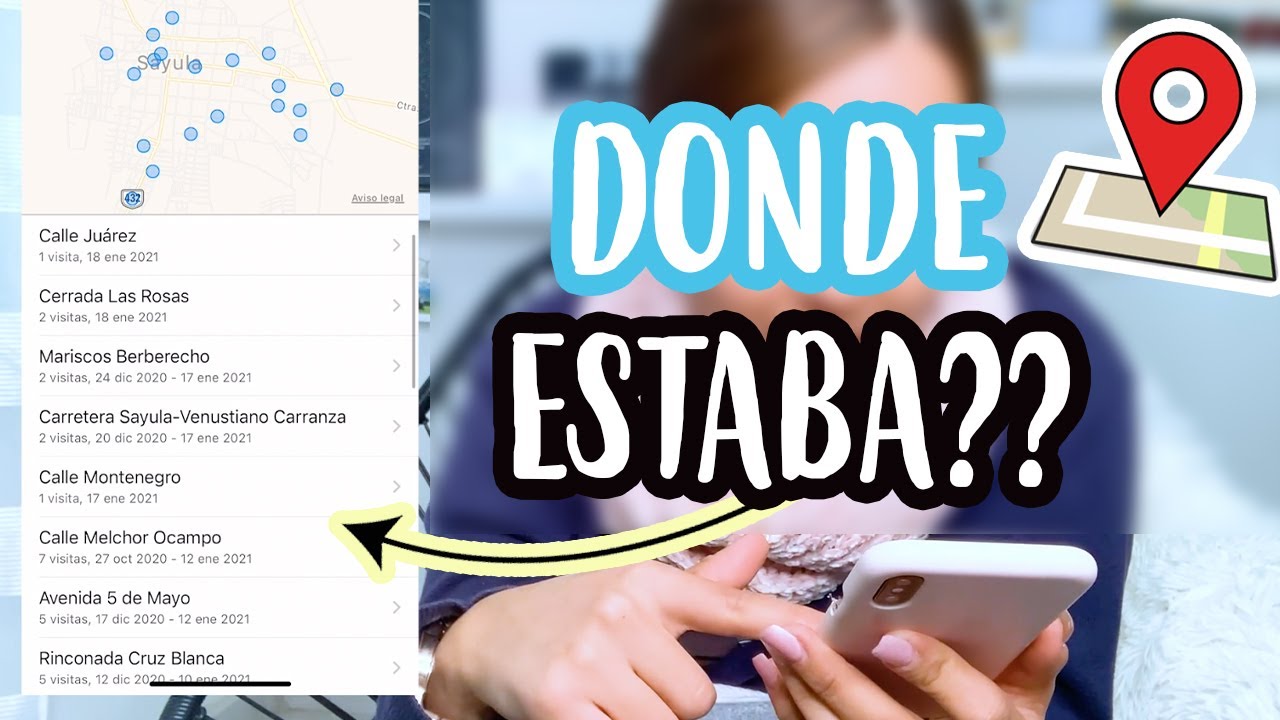Understanding the Importance of iPhone Location History
Have you ever wondered just how much your iPhone knows about your whereabouts? It may come as a surprise, but your trusty device keeps a detailed record of your every move. Yes, that’s right – iPhone Location History is a thing!
But why does this matter? Well, understanding the importance of iPhone Location History is essential for several reasons. For one, it can help you retrace your steps if you happen to misplace your phone. Additionally, it can serve as a powerful tool for law enforcement agencies in criminal investigations.
Now, you might be thinking, «How does my iPhone even know where I’ve been?» The answer lies in the device’s built-in GPS (Global Positioning System) and other location-tracking technologies. From the moment you enable Location Services on your iPhone, it starts gathering data about your movements.
So, what exactly does iPhone Location History entail? It includes information such as the date, time, and precise location of every place you’ve visited. This data is then stored securely on your device, allowing you to access it whenever needed.
1 Protecting Your Privacy
While the convenience of iPhone Location History is undeniable, some may have concerns about privacy. After all, having a detailed record of your every move stored on your phone can feel invasive. However, Apple takes privacy seriously and has implemented several measures to safeguard your information.
For starters, your location data is encrypted and can only be accessed by you, unless you choose to share it with specific apps or services. In addition, Apple gives you complete control over your Location Services settings, allowing you to customize which apps can access your location and when.
2 Making the Most of iPhone Location History
Now that you understand the importance of iPhone Location History and how it works, let’s explore some practical ways to make the most of this feature. Imagine you had a memorable dinner at a charming restaurant but can’t remember its name. By accessing your Location History, you can easily find the exact place and relive those culinary delights.
Furthermore, understanding your own movement patterns can be intriguing and even enlightening. You may discover that you spend too much time in transit, or perhaps find hidden gems in your city that you want to revisit.
So, the next time you hear a beep on your iPhone and it’s a notification about your iPhone Location History, don’t dismiss it. Dive into the details, protect your privacy, and unlock the potential insights that this fascinating feature holds. Your iPhone is more than just a communication device – it’s a powerful tool that can help you navigate through life in more ways than one.
Step-by-Step Guide: Accessing iPhone Location History
Welcome back, iPhone enthusiasts! In today’s blog post, we’re going to explore a fascinating feature of your beloved device – accessing your iPhone location history. Whether you’re curious about your own whereabouts or interested in tracking your device for security purposes, this step-by-step guide will walk you through the process.
Before we dive into the nitty-gritty, let’s talk about why accessing your iPhone location history can be a game-changer. Imagine being able to retrace your steps from that amazing vacation you took last year or pinpointing the exact spot where you captured that breathtaking sunset photo. It’s like having a digital time capsule at your fingertips!
Step 1: Go to Settings
First things first, open up your iPhone and head straight to the Settings app. It’s that familiar gear-shaped icon that you’ll find on your home screen. Once you’re in, scroll down until you spot the «Privacy» option. Tap on it, and we’re on our way to unraveling your location history.
Step 2: Tap on Location Services
Within the Privacy menu, you’ll see a list of various app permissions. Look for «Location Services» and give it a tap. This is where the magic happens, as it’s the control center for all things location-related on your iPhone. Keep in mind that you might need to enter your device passcode before proceeding.
Step 3: Scroll Down to System Services
Just a little further down the Location Services page, you’ll find a section called «System Services.» This is where Apple saves your location history, among other nifty system-related functionalities. Go ahead and tap on it to continue our adventure.
And there you have it! With just a few simple steps, you can access your iPhone location history. From reliving your favorite memories to ensuring the safety of your device, this feature puts the power in your hands. So go ahead, dive into the treasure trove of your past locations – you never know what exciting surprises await!
That wraps up our guide for today, folks. We hope you found it helpful and that you’re already planning to embark on an epic journey through your iPhone location history. Don’t forget to share any interesting discoveries in the comments below – we’d love to hear about them! Until next time, happy exploring!
Using iCloud to View Location History
Are you curious about where you’ve been and want to retrieve your location history? Well, you’re in luck! With iCloud, it’s now easier than ever to access your location data and relive your past adventures. In this article, we’ll show you how to use iCloud to view your location history and uncover some exciting insights.
Why would you want to view your location history?
There are several reasons why you might be interested in exploring your location history on iCloud. Maybe you want to reminisce about that incredible road trip you took last summer or trace your steps during a memorable vacation. Additionally, viewing your location history can be useful for verifying past whereabouts, especially if you need an alibi for a specific date and time. Whatever your motivation may be, let’s dive into the steps!
Step 1: Ensure location services are enabled
Before you can access your location history on iCloud, you need to ensure that your device has location services enabled. Head over to your device’s settings and look for the «Privacy» option. Tap on it and then select «Location Services.» Make sure the toggle switch is turned on. This will allow your device to record and store your location data.
Step 2: Sign in to iCloud and open «Find My»
Once you’ve confirmed that location services are enabled, open the iCloud website on your computer or launch the «Find My» app on your iPhone or iPad. Sign in with your Apple ID and password. If you’re using the website, click on the «Find iPhone» icon, which will redirect you to a map displaying your devices. On the app, tap on the «Devices» tab at the bottom of your screen.
Stay tuned for the next steps on how to access and analyze your fascinating location history using iCloud. With just a few clicks or taps, you’ll be able to relive those cherished memories and gain a deeper understanding of your travel patterns. Adventure awaits as we uncover the hidden gems within your location history!
Alternative Methods to Access iPhone Location History
Have you ever wondered how to access your iPhone’s location history? Maybe you want to review your daily routes, or perhaps you’re trying to find a way to track your device in case it gets lost. While there are various methods to access this information, I’m here to introduce you to some alternative options that you may not be aware of.
1. Use iCloud: Did you know that your iPhone’s location history is automatically backed up to iCloud? By accessing your iCloud account on a computer or another iOS device, you can retrieve this valuable information. Simply open the iCloud website, sign in with your Apple ID, and navigate to the «Find My» section. From there, you’ll be able to see a detailed map with all the locations your iPhone has been.
2. Check your Google Maps timeline: If you’re an avid Google Maps user, you might not know that it also keeps track of your location history. This can be really handy if you’ve enabled Google Maps to have access to your location. To access this information, open the Google Maps app on your iPhone and tap on your profile picture in the top right corner. From there, select «Your Timeline» and you’ll be able to view a chronological list of all the places you’ve been.
3. Utilize third-party apps: There are several third-party apps available that can help you access your iPhone’s location history. One popular app is «Find My iPhone & Android» which allows you to track your device’s location and access its location history. Additionally, apps like «Google Location History» and «Life360» offer similar features. Just be sure to research and choose a reputable app that respects your privacy.
Remember, accessing location history should always be done with caution and respect for privacy. Make sure to follow the necessary steps to protect your personal information and only use trusted sources. With these alternative methods, you can easily access your iPhone’s location history and make the most out of this valuable data.
Privacy Concerns and How to Protect Your Location History
The importance of privacy in the digital age
In this tech-savvy era, privacy has become a growing concern for individuals and businesses alike. From social media platforms collecting user data to cybercriminals trying to exploit personal information, it’s crucial to remain vigilant about the privacy of our online activities. One area that often gets overlooked is our location history, the trail of breadcrumbs our devices leave behind as we navigate the world.
The risks associated with your location history
Your location history holds valuable data about your daily routines, habits, and even your personal preferences. While this information can enhance the user experience of certain apps and services, it can also pose significant risks if it falls into the wrong hands. From potential stalkers to advertisers looking to target you with hyper-localized ads, there are various entities that can misuse your location history for their own benefit.
Simple steps to protect your location history
Thankfully, there are practical steps you can take to safeguard your location history and protect your privacy.
1. Review and adjust your app permissions: Regularly go through the permissions granted to the apps on your device. Disable location access for apps that don’t necessarily need it.
2. Use a VPN: A Virtual Private Network (VPN) encrypts your internet connection, making it harder for others to track your location. Consider using a reputable VPN service to mask your real IP address.
3. Be mindful of public Wi-Fi networks: Public Wi-Fi networks can be vulnerable to hackers trying to intercept your data. Avoid connecting to them when dealing with sensitive information or turn off your Wi-Fi altogether.
4. Frequent location history cleaning: Many devices and apps allow you to delete your location history. Take advantage of this feature and regularly clear your location data, reducing the likelihood of it being misused.
By following these simple steps, you can proactively protect your location history and maintain a higher level of privacy in today’s digital world. Remember, your personal data is valuable, and taking these precautions is essential to safeguarding your online presence.

